It’s not a spectacular building. In fact it’s what it always used to be – a college. But this nondescript building next to the station in Reims is historic. This is where World War II ended in Europe. This is where the Germans signed their (first) unconditional surrender.
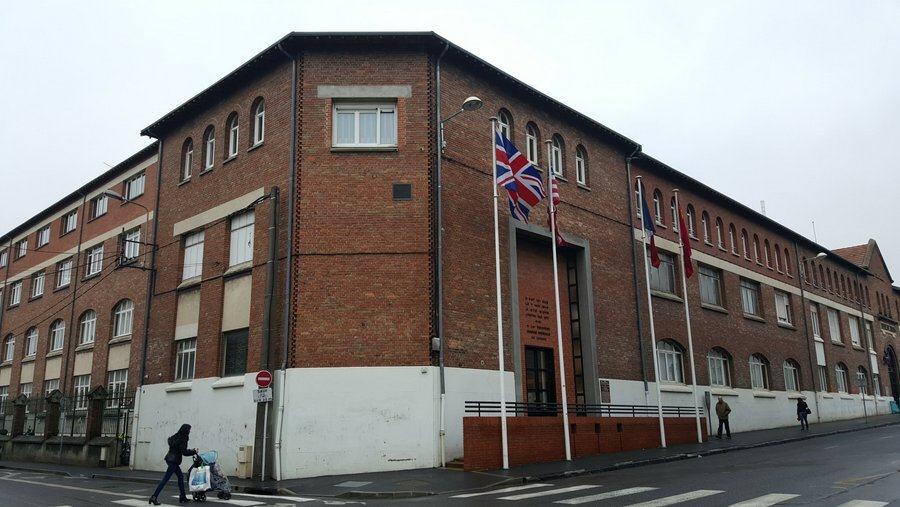
The Musée de la Reddition (Surrender Museum) occupies a corner of what had been Reims’ technical college in 1944, and is now the Lycée Polyvalent Franklin Roosevelt.
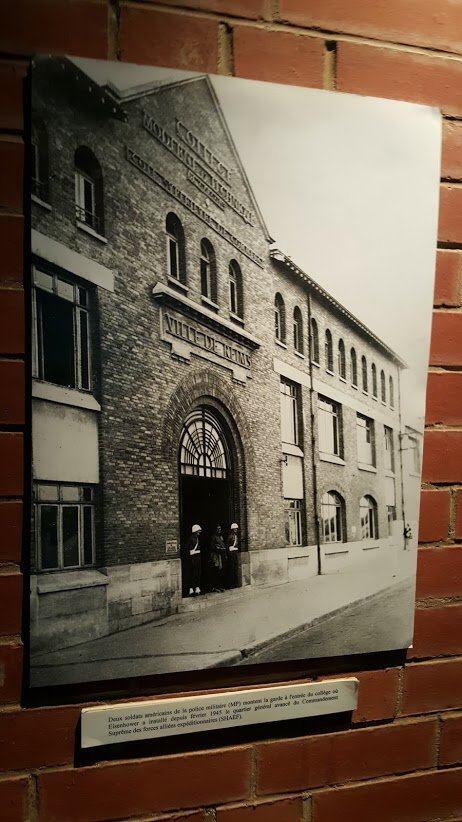
After the liberation of Paris on 25 Aug 1944, the German forces were chased north east back towards Germany. They had planned to make a defence around Reims, but the Allies were advancing too quickly – especially General Patton’s 3rd Army – and the core of the retreating forces passed through Reims on 28-29 Aug, heading for the Ardennes.
What little resistance the Germans put up at Reims, was overwhelmed by the Allied advance. The battle for Reims cost the Germans 446 dead and 1,847 taken prisoner. The US Army got off lightly – 13 dead, 86 wounded, and they took possession of a city that was close to the front line with valuable infrastructure and communications, namely: road, rail, canal, an airbase, warehouses and, for once, an intact telephone exchange… the ideal spot for a headquarters!
The forward command post of SHAEF – Supreme Headquarters Allied Expeditionary Forces, was set up on the outskirts of Reims in September 1944, and in November the General Staff of the 101st Airborne Division moved into the technical college building next to the railway station. (It was from here that Brigadier General McAuliffe, mobilized for Bastogne and the ‘Battle of the Bulge’). By mid-Feb 1945 things had quietened down and General Eisenhower moved SHAEF itself to the technical college in Reims.
In April 1945 the pace of events quickened when the Allies crossed the Rhine into Germany, and by the end of that month (30 April) Hitler was dead. Berlin was captured by the Soviet Army on 2nd May.
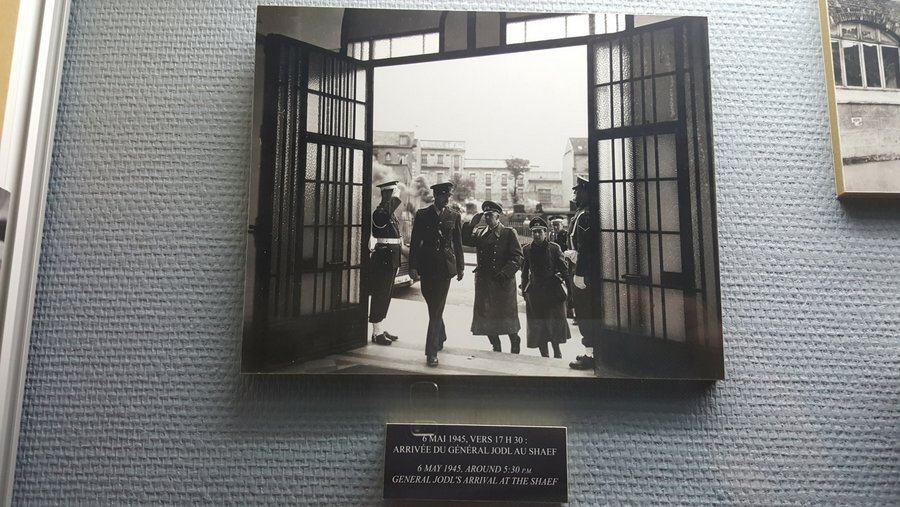
Grand Admiral Dönitz, now in charge of Germany and its forces, wanted to end the war with the Western Allies and hoped that would enable Germany to continue the war against the Soviet Union. On May 5th he sent Admiral von Friedeburg (Commander-in-Chief Kriegsmarine) to Reims to negotiate an armistice with the West. Eisenhower refused and made it clear that only an unconditional surrender on both fronts would be acceptable.
The following day, Döntiz sent the Chief-of-Staff of German Forces, General Jodl, to try to change Eisenhower’s mind but the answer was the same – unconditional surrender on both fronts. There was one concession; there would be a 24-hr delay to the official moment of ceasefire to allow German units a chance to make their way and surrender to the west, rather than to Soviet forces.
Dönitz agreed and Jodl signed the surrender document in the war room at SHAEF at 2.41am in the morning of 7th May 1945.
I’m not sure why the signing took place in the war room. There must have been other rooms as large, without the top secret maps on the walls. I suspect it was a bit of showmanship. My guess is that before they agreed to total surrender, talks with Von Friedeburg and Jodl were hosted in other rooms at SHAEF. Once they agreed to sign, there was nothing to hide. Indeed part of me wonders if Jodl wasn’t looking up at the maps surrounding him and thinking to himself “My God, they’ve got there already and with that many divisions! We’re surrendering in the nick of time!”
So what’s there?
Well, it’s a small museum and the focus is the room itself, but there are also some exhibition galleries with interesting exhibits, especially some of the photos & documents, and on the ground floor, to get you oriented, a small cinema showing a 19-minute film (in English, French or German) explaining the events in Reims and the SHAEF building.
On the second floor, where the War Room is, there are some small galleries with displays of uniforms, models, items of equipment, documents and photos.
All journalists know what an ’embargo’ is. This one was a super-embargo! A number of war correspondents were quickly flown to Reims to witness the surrender, but not before they had sworn on oath not to reveal the historic event until permitted by SHAEF.
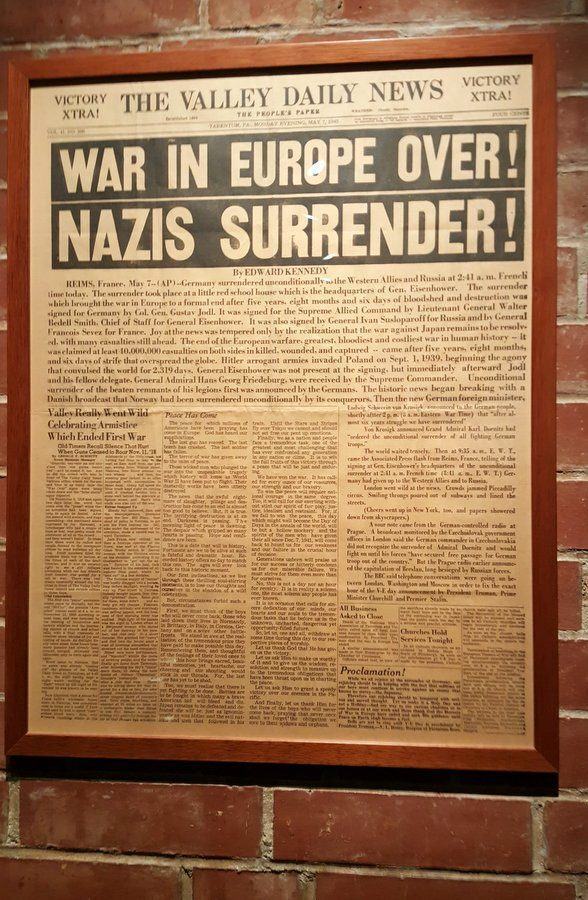
In the morning they were flown back to Paris where one of them, Edward Kennedy of the Associated Press, broke the news. He had heard the announcement of the surrender made by Doenitz himself on the radio, so the news was already out, and it made the evening editions of the newspapers in the USA. The heads of the western allies, Truman, Churchill & De Gaulle were caught off guard by this and had to make their radio announcements the following day, May 8th.
Stalin, had been disappointed that the surrender signing was not taking place in the Soviet zone, and had demanded that a second ceremony should take place in Berlin. The second signing, by German Field Marshal Wilhelm Keitel, took place at General Zhukov’s HQ (a former German Army Engineering School that now houses the German-Russian Museum Berlin-Karlshorst) at 23.01 on May 8th, the official deadline for the end of combat.
The end of WW2 in Europe didn’t really come with one signature. In fact it was a cascade of surrenders from 2nd May in Berlin & Italy to 4th Sept in Svalbard. But the key surrender ceremonies were in Reims and Berlin.
Have you been here? What did you think?
(UPDATE 17/12/2024: The 8th May 2025 will mark the 80th Anniversary of the end of the war. There will be, as yet unspecified, ceremonies/events at the museum and in Reims on the day. It would be best to visit before that, if you can, because the following week – 12 May – the museum will be closed for renovations until March 2026.)
Declaration: My visit to Reims was hosted by the regional tourist board, Champagne & Ardenne, and my visit to the museum was free.
Factbox
Website:
Hard to believe in 2017, but they don’t have one!
UPDATE: And in 2024 they still don’t! But they are presented on the Musées de Reims website.
Getting there:
Musee de la Reddition, 12 rue Franklin Roosevelt, 51100 Reims, France.
It’s easy to find on the northside of the railway station, within walking distance of the centre of Reims.
Price (2024):
€5.50 Adults
Free for children up to 18
€3.30 Young adults 18-25
€3.30 Senior over 65
€3.30 Group rate (20 people)
Opening Hours (2024):
10am – 12noon and 2pm – 6pm every day except Tuesdays
Also closed 25th Dec, 1st Jan & 1st May, then closed till March 2025 for renovations.

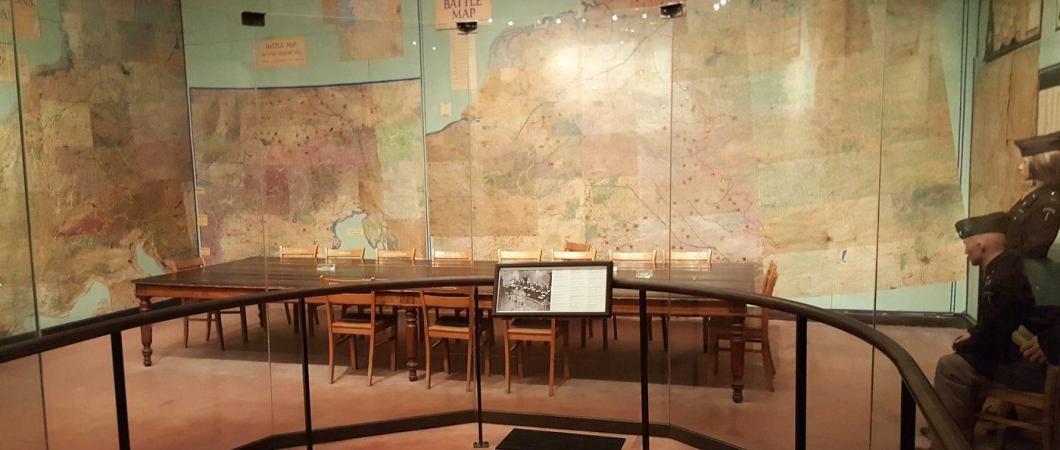




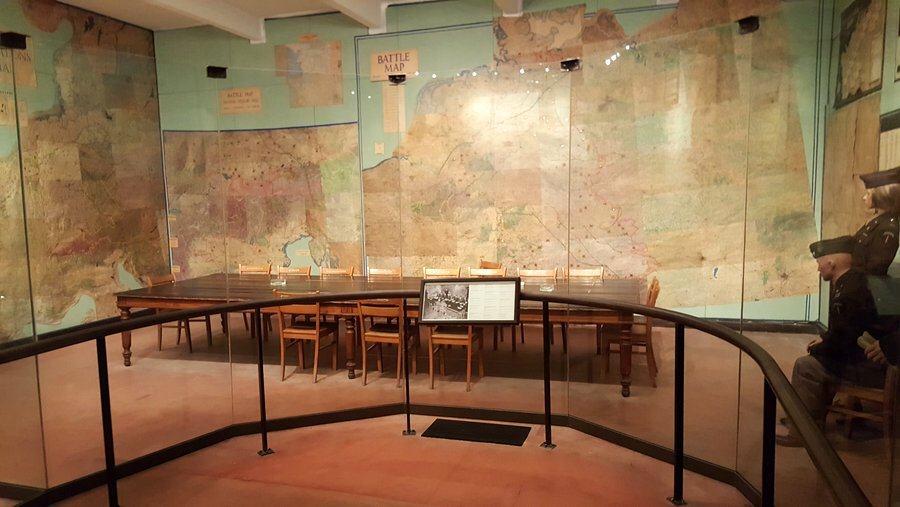

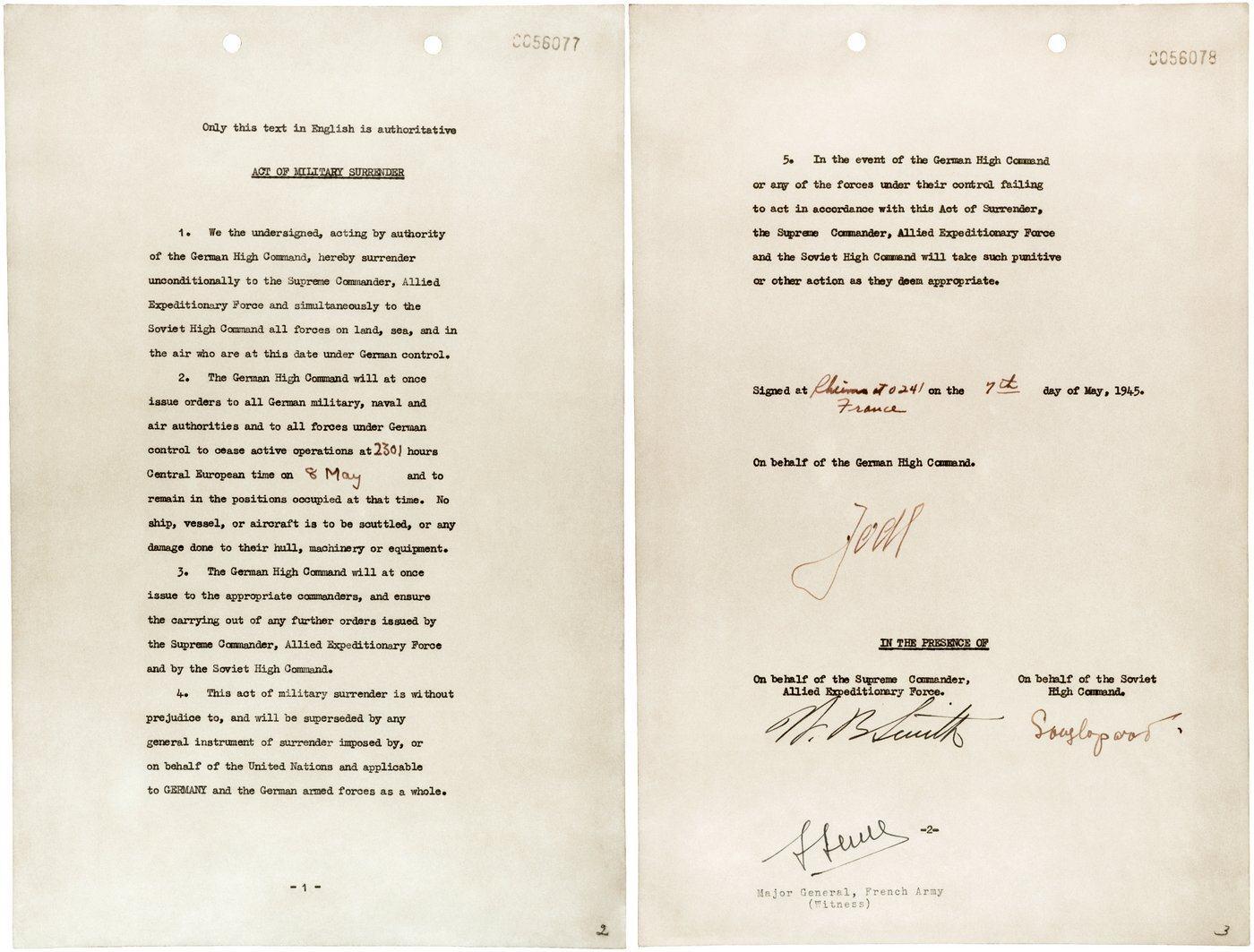




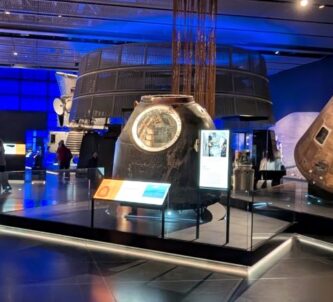
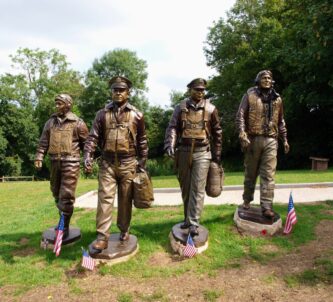

It looks a fascinating place and well worth a visit. Remarkable that the surrender took place in Reims rather than Berlin.
Hi Stuart. I think it was driven by the Germans’ desire to surrender to the Western Allies and not the Russians who were already in Berlin.
The other day I discovered that Chris Leadbeater wrote the Surrender Museum up for the Independent in 2015, only he was more eloquent than me (don’t you hate talented writers!).
He made a poignant observation about the way that the lives of the 3 key players (including General Walter Bedell Smith who actually who presided over the surrender ceremony, representing Eisenhower) went in different directions from the moment of Jodl’s swirling signature:
“From that second, these three men were bent on different paths. Eisenhower would serve as the 34th US President from 1953 to 1961, with Smith – who would become director of the CIA in 1950 – as a prominent part of his team; Jodl would be tried as a war criminal at Nuremberg, and hanged on 16 October 1946.